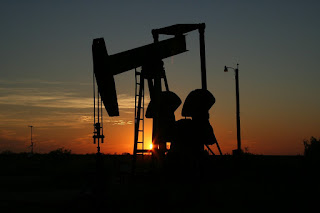Fuel prices have
plummeted recently and don't show any signs of going back up as we step further
into the new year. You might be asking yourself why this is happening.
The oil industry seems always to be fluctuating
and changing, but this recent downturn is the worst that the industry has seen since the late 1990s, and possibly
even earlier than that.
Companies that once made record profits are now
struggling to keep the money coming in, leading them to stop production on many
of their rigs and sharply cut investments in exploration and oil field
development. Several smaller companies have gone completely bankrupt, and
almost a quarter of a million workers have lost their jobs.
The cause of this crisis is the plummeting price of
a barrel of oil. In the last decade, $90-$100 was the norm for a barrel of oil.
Now the price has dropped to around $30 a barrel, with no sign of returning to
the previous highs any time in the next year.
Why has the price of oil dropped so much?
Much of the reason boils down to supply and
demand. In the United States, oil production is at its highest level in nearly
30 years, thanks to new technologies and techniques like hydraulic fracturing,
which has made possible the exploitation of previously inaccessible shale deposits.
In addition, U.S. crude oil inventories are higher than they have been in over
80 years.
The global oversupply is caused by surging
production in other countries as well. Russia, a major oil exporter, has
refused to decrease production to help stabilize prices—likely out of a fear
that importing countries would respond by boosting their own production,
thereby eliminating the market for Russia’s oil exports. Saudi Arabia, OPEC’s
most powerful member nation, also appears determined not to cut production. Similarly,
the government of Venezuela, another large oil exporter, has stated it will not
end subsidies to oil producers.
Oil production is also set to increase elsewhere.
In Iran, years of Western sanctions caused oil production to fall, and also
barred the country from obtaining the most current technology and equipment
from the Western world. However, these sanctions are now being lifted, and Iran
is expected to see a boost in production soon. The country’s oil minister recently
told CNN that it aims to increase its current output by 1.5 million barrels by
the end of the year. Analysts are more conservative, estimating that Iran will
be able to add between 600,000 and 1 million barrels to its current production
levels in 2016.
However, there are also signs that production
rates are dropping, due to a steep decline in exploration investments. The consulting
firm Wood McKenzie identified 68 significant oil and natural gas projects
around the globe that held a combined value of $380 billion and represented
some 27 billion barrels of oil and equivalent natural gas amounts. These
projects have been virtually halted since prices started coming down. In
addition, Exxon has reduced its oil drilling budget to a 10-year low and has cut
spending by 25% on gas terminals and rig leases. Royal Dutch Shell has backed
off of costly exploration projects in Alaska. Oversupply, however, is still a global
problem despite these developments.
Coupled with oversupply is weak demand. The
economic outlook in Europe, several developing countries, and China is weak.
China’s recent devaluation of its currency is a troubling hint that its
economic woes may be more serious than many observers believe. In addition,
automobiles are becoming more and more efficient, reducing the demand for fuel.
Who benefits from the price plunge?
That question is a bit easier to answer: in the
short term, the consumer benefits the most from the price drop. Anyone faced
with a daily commute can tell you how much gas prices have fallen. With the
most recent decline, average gas prices in the U.S. hovered at $1.82 per gallon
as of early February 2016. That amount is $.37 less than the previous average
this time last year. Americans can now travel further for fewer dollars.
Who suffers the most from falling oil prices?
Many people might assume that it’s the oil
companies taking the biggest hit, but that wouldn’t be completely accurate. For
starters, oil-producing countries take an enormous economic hit. Russia,
Nigeria, and Venezuela are just a few oil-rich countries that are suffering
economic—and as a result, political—hardships due to falling oil prices.
Meanwhile, Chevron, Royal Dutch Shell, and BP
have all been forced to make cuts to their payrolls. Despite that, they are
still better off than smaller oil and gas producers, many of whom have had to
sell off their assets and cut out dividends to investors after significant
losses.
Unfortunately for the oil-producing countries and
companies hurt by the drop in oil prices, there aren't any signs of recovery
any time soon. Some balance could be recovered by 2016, but experts believe it will
be marginal at best.







